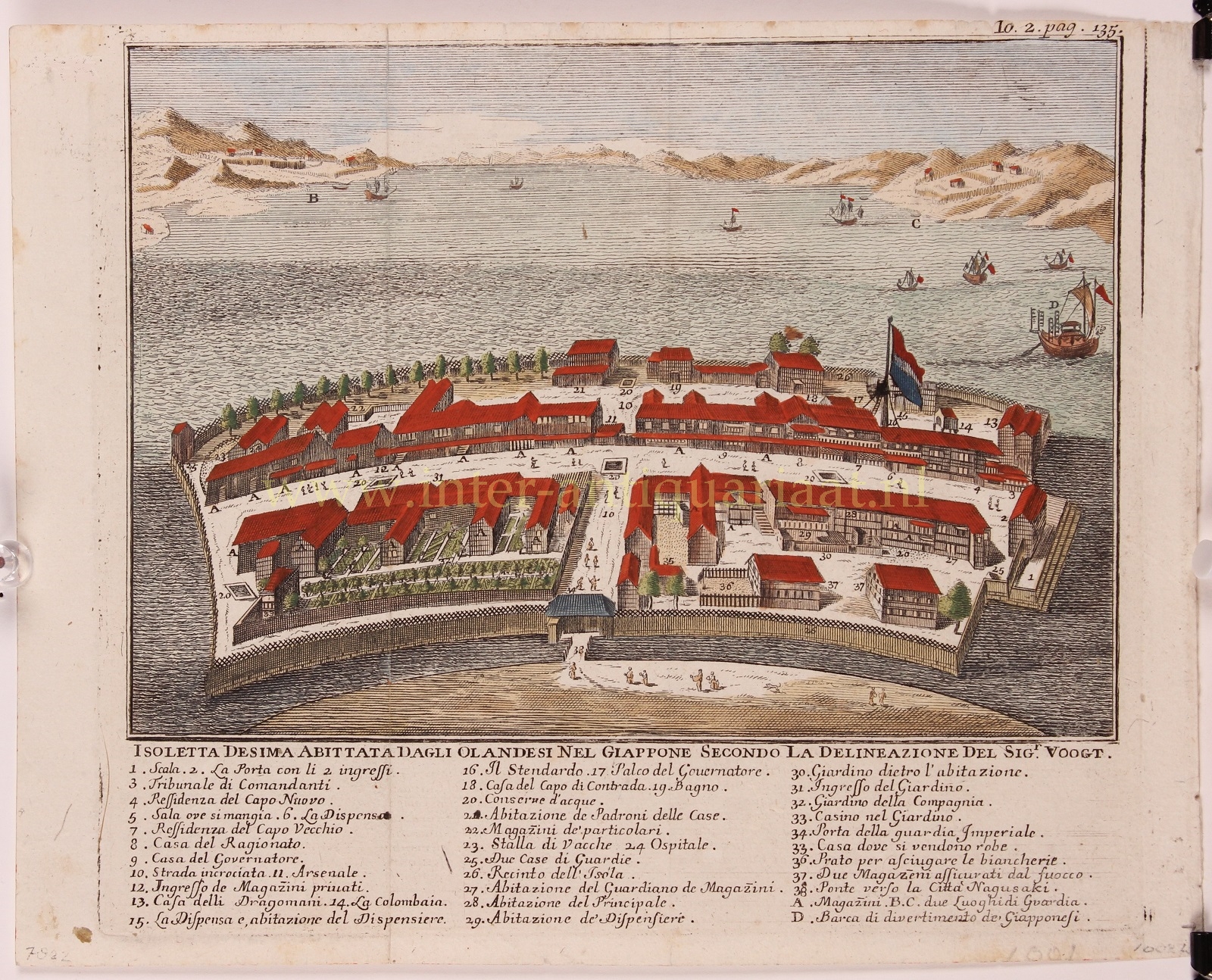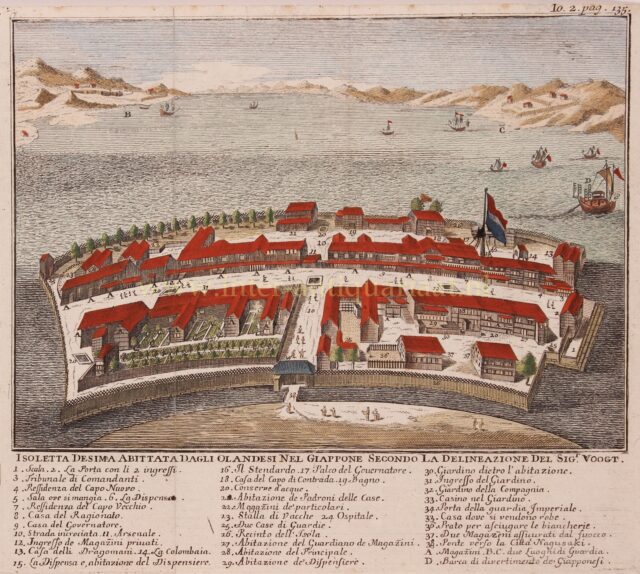Dejima – Thomas Salmón after Gerrits Voogt, 1736
THE DUTCH TRADING POST AT DEJIMA “Isoletta Desima abittata Dagli Olandesi nel Giappone” [The island of Dejima where the Dutch…
Read more
THE DUTCH TRADING POST AT DEJIMA
“Isoletta Desima abittata Dagli Olandesi nel Giappone” [The island of Dejima where the Dutch live in Japan]. Copper engraving from “Lo stato presente di tutti I paesi e popoli del mondo naturale, politico e morale, con nuove osservazioni e correzioni degli antichi, e moderni viagiatori” [The present state of all countries and peoples of the natural, political, and moral world, with new observations and corrections by ancient and modern travelers], by Thomas Salmón and published by Gianbattista Albrizzi in Venice in 1736. Coloured by a later hand. Size: 17.5 x 19.5 cm.
After the expulsion of the Portuguese from Japan, only Chinese and Dutch ships were allowed to come to Japan, and Nagasaki was the only port they were permitted to enter. Dejima (築島) became the trading post for the Dutch East India Company (VOC) in 1641 and remained Japan’s only contact with Europe until the end of the 1850s.
Life on Dejima was monotonous. The Dutch lived on the fan-shaped island of about 70 by 210 meters under strict restrictions. Except for the annual visit to the shogun in Edo (present-day Tokyo), they were not allowed to leave their island. The occupation typically consisted of a Chief Merchant, a Second Merchant, several junior merchants, and several assistants, including the doctor, during the trading season from August to November.
This bird’s-eye view of the Dutch trading post is based on a drawing by Gerrits Voogt, who was second in command on Dejima in 1713. We see the island from the land side, with its new warehouses and garden, as well as the infamous Entertainment House with a billiards table and musical instruments on the upper floor, which made a great impression on the Japanese population and officials.
Price: SOLD




